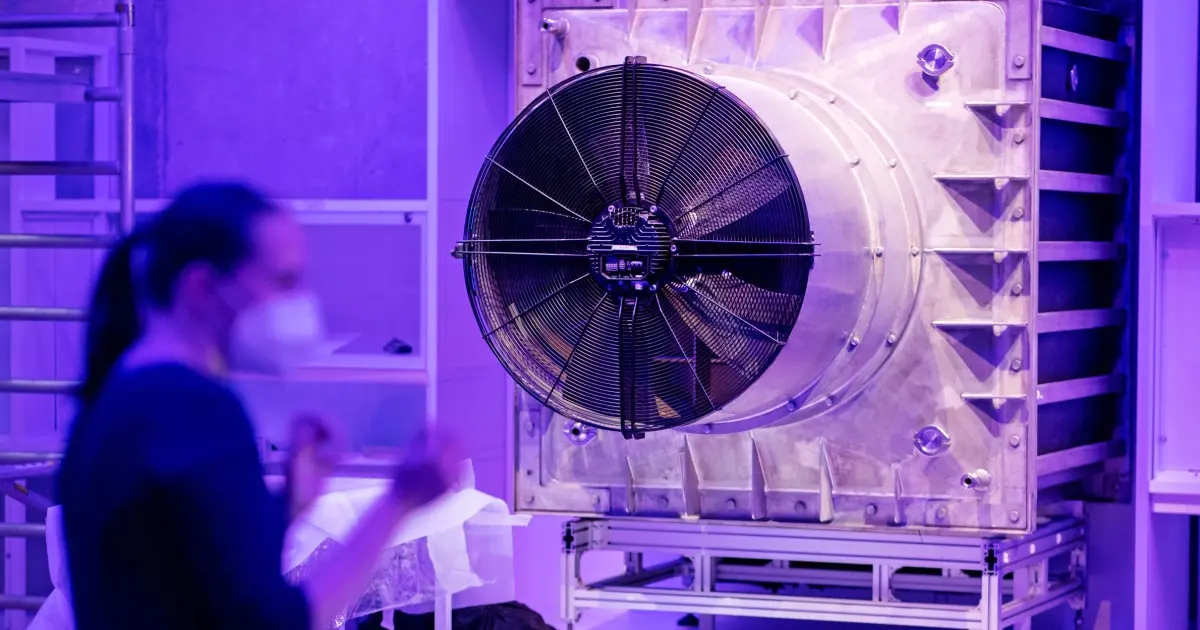I think it’s clear we need to remove carbon from the atmosphere in addition to moving away from carbon-producing energy sources entirely. It’s also obvious that these systems will only have net-negative carbon impacts if they’re powered by renewables. At this point it’s much more carbon-removing and cost-effective to transition to renewables than for energy companies to “offset emissions” by buying “carbon credits” in the form of running these technologies while still producing CO2 etc. At the same time, many countries in Africa have ample renewable resources and would benefit from investment in electrical infrastructure, and if there’s incentive to choose renewable instead of fossil fuel to develop Africa and bring up the quality of life of the people living there while industrializing, I think that’s ok, and might lead to fewer emissions overall (assuming African countries’ industrialization follows the trend of other developing nations).
This comment is well reasoned. Carbon capture is worth continued development and research, it should be a long-term goal once we have moved to 100% renewable sources of energy, until that point it’s just wasteful to spend money on this where it would better be spent on provisioning more renewables or infrastructure as you very rightly point out.
Wouldn’t it be more effective in terms of cost and GHG levels to replace coal plants with renewables?
That’s gotta happen regardless, and co2 has an atmospheric half life of thousands of years, so we need to get it out somehow to get back to 0°
Yes, you’re absolutely right. Carbon capture is a big waste of time and money.
That’s what everybody said about solar / renewables in its infancy. We know we’re going to need the technology, far better to start developing it now than when it’s too late.
yeh this is a really promising technology and it’s not as far as most people seem to think from being widely adoptable, there are some great projects underway
The CCH2 [Carbon Capture and Hydrogen production from Biomass, Kew Technology] Project will develop designs for additional modules which will upgrade this gas to produce separate high-purity Hydrogen and CO2 streams. The hydrogen can be sold for industrial / transport applications and the CO2 sent for sequestration (20,000 tonnes per year per module). The strong revenues from the hydrogen enable overall very low costs per tonne of CO2 removed and the financing of sustainable biomass supply chains in a circular economy providing multiple environmental and societal benefits including new rural and industrial jobs.
basically you grow a load of plants (generally the excess biomass from crops and maintained spaces) and burn them (in this case through a gasification process that releases hydrogen also) the carbon which is released is then captured for storage or use, this can be especially useful when burning plants that have grown on toxic ground or polluted rivers as a way of absorbing all the bad stuff which is then trapped forever and returned to an old coalmine along with all the carbon that originally came from there.
another interesting project that just got funding is DRIVE;
Mission Zero has developed a new DAC technology that, at scale, is projected to have 75% lower costs and energy footprints than today’s commercial solutions and is suitable for both carbon utilisation and sequestration (CCUS) use cases. With engineering support from Optimus, the project will design Mission Zero’s 365 tons a year pilot plant in Phase 1. This will integrate with O.C.O Technology’s CCUS process which stores CO2 permanently while producing building aggregates from waste.
using the captured carbon to make useful materials like building aggregates makes it far more likely systems will get adopted, especially if they get to a price point where they’re creating profitable items This is something a lot of people are working on
[Cambridge Carbon Capture Ltd] aims to deliver a fully costed plan for a demonstrator capable of capturing CO2 from air and converting it directly into a mineral by-product with uses as construction materials using CCC’s CO2LOC carbon capture and mineralisation technology.
Another really cool use of captured carbon has recently passed a loads of tests from the US Air Force who’ve worked with a company called Twelve on a project to create a viable jet fuel from CO2,
E-Jet fuel is SAF produced using Twelve’s revolutionary carbon transformation technology, which uses only renewable energy and water to transform CO2 into critical chemicals, materials and fuels conventionally made from fossil fuels, and in partnership with Emerging Fuels Technology. As a power-to-liquid SAF with up to 90% lower lifecycle greenhouse gas (GHG) emissions compared to conventional, petroleum-based jet fuel, E-Jet fuel meets the applicable ASTM International specifications and is a drop-in ready synthetic fuel that works seamlessly with existing aircraft and airport infrastructure. It faces no real constraints on feedstock, thus offering the best viable long-term solution for addressing GHG and other emissions from the aviation sector.
the test facility they’re currently building isn’t going to produce much but it’s a huge first step on the way to industrialisation of the technology,
The facility is expected to begin E-Jet fuel production in mid-2024 at a capacity of approximately five barrels per day (40,000 gallons per year), with plans to quickly increase production capacity.
that’s only about 0.00007% of the Jet Fuel used per year, but if they refine the system and make one which can be built at any airport using power from onsite renewables then it’s likely we’d see a very rapid adoption.
That’s my though, do the r&d now and full scale deploy when we have more renewabel energy
That’s what everybody said about solar / renewables
I don’t think that’s true, can you back up your claim?
we’re going to need the technology
I support research and development of the technology, because it’s something which could be useful in the future. But this article is about building carbon capture facilities today, which is a big waste of money.
I don’t think that’s true, can you back up your claim?
It’s survived till today as a conservative talking point. How solar can’t pay off its own manufacturing costs, etc etc. None of it’s true, but that’s where it started.
I support research and development of the technology, because it’s something which could be useful in the future. But this article is about building carbon capture facilities today, which is a big waste of money.
R&D does not happen solely in the lab. At some point, you need concrete, full scale examples to work with on ironing out the kinks and figuring out where theory doesn’t apply in reality.
We’re not building a thousand of these plants. This is the early PoC example that we need to progress the technology.
Sure, I’m happy to support building large scale experimental establishments to test the theories, but that’s not what this is at all. This is a commercial installation in Africa, of all places. Why would the European research teams build a research facility so far away? That doesn’t make sense.
What’s the difference between a large scale experimental establishment, and a first of its kind commercial experimental establishment?
As for location, presumably cheap land, power, lack of NIMBYs. Maybe tax incentives.
It’s not the first of its kind though. It’s just the first in Africa. There are already a bunch of these in Europe and America.
If the researchers are in Europe then it doesn’t work for the plant to be in Africa. I don’t know why you’re arguing such an obviously wrong position lol
More than 10 years ago solar and wind were talked about very diffrently. They required subsidies to operate and weren’t cost effective. We nursed the new technology to commertial viability and everyone forgot about that part
Im waiting for the mountains of coal we’ve burned (and continue to burn) everyday to be re-extracted from the atmosphere. I think i need something comfortable to sit.
@Blake@feddit.uk thought you might be interested in saving Africa some cash
Yep, carbon capture, much like nuclear, isn’t cost efficient. Investments in electrical infrastructure in Africa should be the top priority there, they still predominantly use paraffin fuel for lighting and other combustibles for cooking and heating. The main issue there is infrastructure rather than energy production. But rolling out energy infrastructure isn’t sexy and profitable so it’s low priority for these capitalist monsters haha


